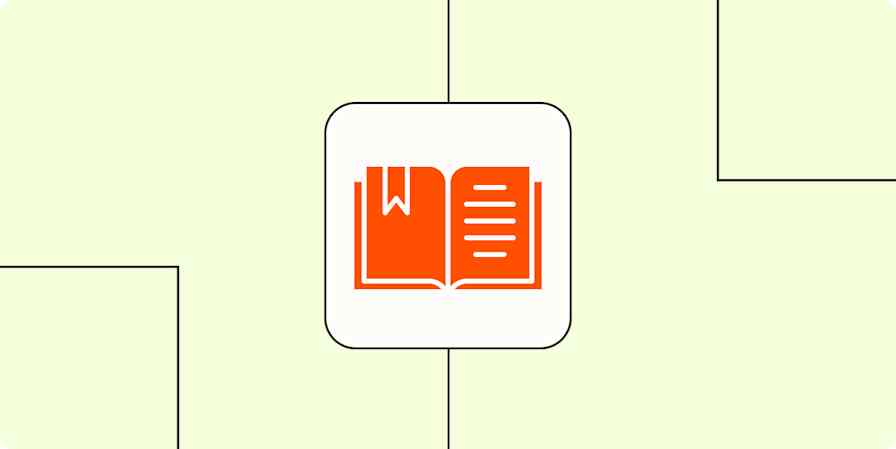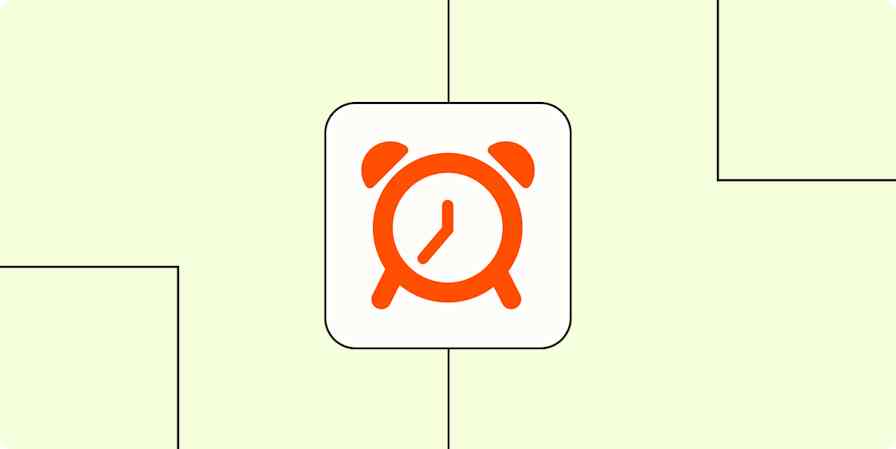If there's one thing I've learned writing for a living, it's that creativity is unreliable. Sometimes it takes me one hour to write an article. Other times, it takes me just as long to write one sentence, if that.
Instead of forcing myself to stare at a blank page endlessly, I've adopted a new productivity strategy—the Flowtime Technique (a.k.a. Flowmodoro)—which encourages me to write when I'm in the zone and take breaks when I'm not.
If you're looking for a more effective way to manage your time, Flowmodoro might be right for you. Here, I'll walk you through what it is, how to do it, and the best tools to implement it.
What is the Pomodoro Technique?
Since the Flowtime Technique is a modified version of the Pomodoro Technique, it's helpful to understand the latter. Here's the short version.
With the Pomodoro Technique, you pick one task to complete, set a timer for 25 minutes, and work until the time's up. Then you take a five-minute break and repeat the whole process three more times. After that, you take a 15- to 30-minute break, depending on how you feel. That's one full Pomodoro cycle.
Then you simply repeat the process (anywhere between two to four cycles is common) until your work or study session is complete.
Because each working period is relatively short and followed by a guaranteed break, the Pomodoro Technique is a great way to tackle tasks that you don't want to do (e.g., studying for an exam) or tasks that require little thought (e.g., transferring data from a document into a spreadsheet).
The drawback of using the Pomodoro Technique
Imagine telling Dolly Parton to write the next great song, but that she only has 25-minute working periods to do it. The brief and rigid time intervals would likely inhibit her ability to get into a creative writing zone—and the world would be robbed of many karaoke classics.
This brings me to the biggest drawback of working with the Pomodoro Technique: it prevents you from getting into a flow state—a period of time in which you're highly focused and productive. Because if the distraction of the alarm doesn't take you out of the zone, the break most certainly will.
What is the Flowtime Technique?
The Flowtime Technique was created by Zoë Read-Bivens as a solution to Pomodoro's main problem. You're still breaking your day into working periods, but instead of time-blocking, Flowtime allows you to fully immerse yourself in a task and take much-needed breaks at a natural stopping point. Here's how to do it.
Similar to Pomodoro, you pick one task to focus on during a session. Once you've picked your task, start working on it, but note the time you began working. Keep working until you start feeling tired or distracted. Once you do, note the time (this is your end time), and take a break.
There's no set time for how long your break should be, but here's what Read-Bivens suggests:
For 25 minutes of work or less, take a five-minute break.
For 25–50 minutes of work, take an eight-minute break.
For 50–90 minutes of work, take a 10-minute break.
For more than 90 minutes of work, take a 15-minute break.
It's worth mentioning that these suggestions are simply that—suggestions. If you need more time to recharge, that's fine. As Read-Bivens puts it, "Refreshed work is orders of magnitude better than fatigued work."
And if you, like me, easily get sucked into extended periods of deep work and only come up for air when you've hit your beyond-exhausted point, here's how you can mitigate this: pick smaller tasks to focus on. This way, you increase the frequency of your breaks while building an understanding of how long you can work before feeling fatigued.
Benefits of using the Flowtime Technique
While the primary benefit of using the Flowmodoro Technique is that it allows you to achieve a flow state from time to time, there are other benefits to using this approach.
Take the guesswork out of scheduling your workday. Since you're documenting start and end times for each task, you can use your Flowmodoro data to understand how much time it takes you to complete different types of tasks. This way, you can create data-informed estimates for how long future tasks will take.
Reduce interruptions. Read-Bivens suggests tracking activities that pull your attention away from the task at hand (e.g., texts, social media scrolling, and desk drop-bys). Tracking this data can help you discover your biggest sources of distraction so you can take steps to eliminate them.
Identify your chronotype. Your time-tracking data can also help you identify times of the day when you're most focused. Or, if you work in different locations, spaces where you get the most work done.
Create a personalized time-management strategy. If the more structured Pomodoro method works better for you, experiment with the Flowtime Technique for a few weeks to understand what time blocks generally work for you. Then you can use that data to tweak the Pomodoro intervals, ensuring you take regular breaks throughout the day without impacting your flow-state potential.
What's the best method to track your time?
While Read-Bivens recommends using a spreadsheet or good old-fashioned pen and paper to track your time, these aren't the most efficient time-tracking methods. Plus, if you need to analyze how you spend your time, it could take you hours to manually parse through the data.
Instead, I've found it much easier to use a time-tracking app like Toggl Track because it allows me to track my time directly within Google Chrome (where I do virtually all of my work) and do basic reporting.
Tip: Not sure which time-tracking software to use? Here's a roundup of the best time tracking apps for individuals and small teams.
Choose the productivity strategy that's right for you
The purpose of a productivity strategy isn't to box you into a strict set of rules. Instead, it's to help you discover new ways to stay focused, prioritize tasks in your to-do list, and get things done—even when you don't want to.
Maybe neither technique—Pomodoro or Flowtime—is right for you. Perhaps the best solution for you is a blend: a sort of PomoFlowTime where you use timers to help you tackle the tasks you hate, but ditch when you're feeling inspired. If that's what works for you, that's great. But if you write about it so others can use it, please don't call it PomoFlowTime.
Related reading:
This article was originally published in April 2019 by Jessica Greene. The most recent update was in July 2023.










